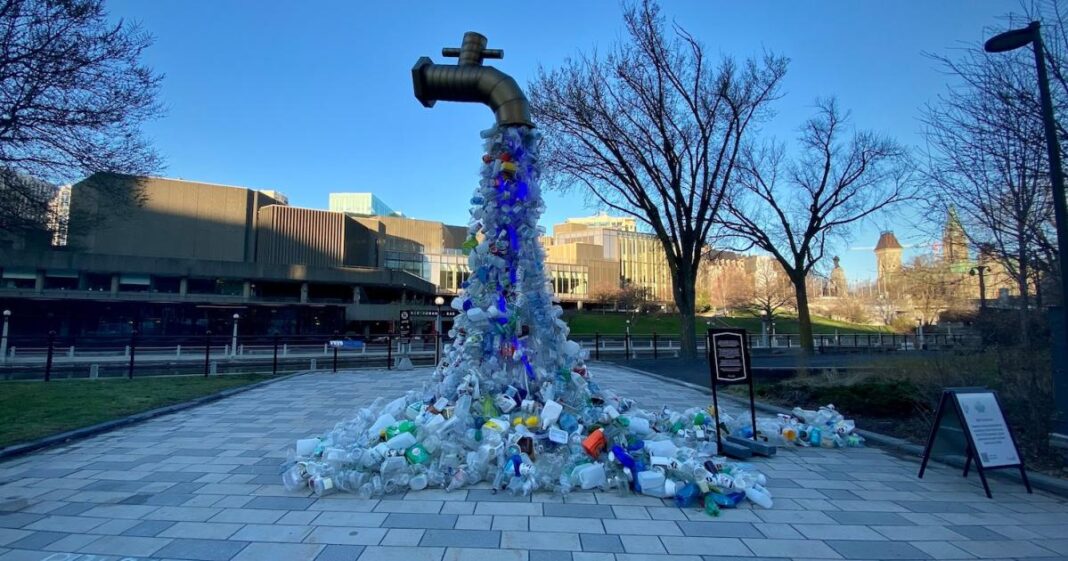The Giant Plastic Tap art installation has been dismantled. The attendees have gone home. The Shaw Centre in Ottawa, Ontario, which in April played host to thousands of delegates from 170 countries at the second-to-last round of talks for a U.N. treaty to end plastic pollution, has resumed a more usual service.
The outcome of what happened there — from the corridor conversations to the conference room contentions — last month are of the utmost importance not only to those with a delegate pass or dial-in code but to every business, individual and living thing on this planet.
For the past two years, an Intergovernmental Negotiating Committee (INC) has been working to develop an international legally binding instrument that will tackle the plastic pollution crisis in a globally coordinated way.
As meeting agendas go, “ending plastic pollution” is almost as big as it gets. Drafting an agreement of such magnitude requires both ambition and an immense level of detail to make it work in practice. It is unsurprising that many (many) hours of each international gathering get a little lost in the weeds of exact wording and individual interventions. This is the painstakingly necessary process upon which global governance is built.
Signs of progress
So, at the end of seven long days of delegates working across five subgroups — what progress was made exactly?
- Members made definitive steps to develop and streamline the treaty text further in many areas — including on primary plastic polymers, problematic and avoidable plastic products, and Extended Producer Responsibility (EPR) regulation, as well as technical- and implementation-related matters. This is encouraging, because we need a comprehensive circular economy approach to tackle plastic pollution in a meaningful way.
- Building on significant streamlining of the text itself, members continued to elevate discussion during formal intersessional work on other key topics — notably the mobilization of financial resources that are vital to implementation of the treaty, as well as approaches to chemicals of concern in plastic products and to product design. Setting aside dedicated time will help to lay the groundwork for a strong outcome at INC-5 later this year.
Remaining challenges
However, significant areas of division related to strength of ambition must still be overcome:
- A continued sticking point, present from the outset of the process and felt across all provisions, is between member states that support binding global rules and those that prefer voluntary or nationally determined measures.
- Perhaps the most central divergence in approach remains in the ongoing struggle between a treaty that takes into account the full production-to-pollution life cycle of plastics and stakeholders who seek to focus only on more downstream waste management measures.
We know that voluntary and fragmented action is not enough, and global rules are crucial to create a level playing field and stimulate investment and innovation. The science and the need for a solution that addresses the entire system is clear: We cannot recycle our way out of this. Upstream action — which includes substantially reducing the production and use of virgin plastics as part of a circular economy approach — is vital to tackle plastic pollution.
This is why the Ellen MacArthur Foundation, along with many other countries and international stakeholders, are backing the Bridge to Busan declaration, which calls on members to commit to addressing primary plastic polymer production. To end plastic pollution, it is vital that the treaty includes strong obligations and measures that reduce plastic production and use.
In summary, the takeaway from Ottawa might be “We are not there yet,” but, assuming a level of detail can be progressed during intersessional work in the months ahead of the fifth and final round of negotiations this November in Busan, Republic of Korea, an ambitious global treaty is still within our reach.
The trouble is, time is running out. The accelerating pace of climate change — combined with the latest research that suggests that if plastic production continues along its current exponential growth trajectory it is expected to double or triple by 2050 — makes it essential that delegations redouble their efforts at pace.
